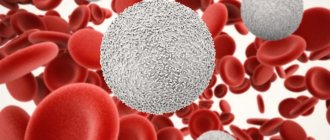Useful articles / October 28, 2020
Even if you exclude all sweets from your diet, this does not mean that this substance will not enter your body with other foods. Sucrose consists of glucose and fructose and is present not only in desserts, but also, for example, in bread, cereals or potatoes. WHO recommends consuming no more than 50 grams of sugar per day (about 12 teaspoons, both obvious and hidden).
As for fructose, it is quickly absorbed, the remainder is stored in the form of glycogen. The situation with glucose is more complicated, but it is not an evil that should be avoided. It is fuel for our brain and muscles. But not all of our organs can easily absorb glucose, so the body starts the process of glycolysis. The main violin in it is the hormone insulin, which regulates blood sugar levels. This work is very streamlined and perfectly rehearsed in a healthy body. However, due to various circumstances, failures may occur in this process. As a result, it is possible to develop a condition called prediabetes (reversible), which leads to diabetes (irreversible). And this is exactly what a blood glucose test will warn you about.
Why do they take a glucose test?
A biochemical test for glucose is necessary to promptly notice disturbances in carbohydrate metabolism and identify the condition of prediabetes.
— Everyone should know their blood glucose level! - explains Lyubava Kazakova, therapist at the ELISA Medical Center. — Healthy individuals are recommended to be tested at least once a year for early detection of patients with prediabetes and diabetes. When examining pregnant women - to diagnose gestational diabetes mellitus. People diagnosed with diabetes should monitor their glucose levels much more frequently to determine the effectiveness of treatment.
Blood glucose levels are not constant. When you eat, your blood sugar rises sharply. If you are hungry, it decreases. Glucose is also actively consumed during physical activity.
In addition to the standard blood test for glucose, there are the following blood tests for sugar:
- Glucose tolerance test with exercise. Helps detect disorders of carbohydrate metabolism and glucose tolerance. Most often - in pregnant women. The analysis is performed several times over a certain period of time. First, blood is donated on an empty stomach, then the patient drinks a glass of water with glucose and blood is drawn 4 times over 2 hours.
- Glucose tolerance test for C-peptide. Prescribed to patients with type 1 and type 2 diabetes to monitor treatment, as well as to patients taking insulin.
- Analysis of fructoosamine and lactate levels. Fructoosamine detects a permanent or temporary increase in glucose in the body for 1-3 weeks. Analysis of lactose levels helps to detect laccytosis (as a consequence of diabetes).
- Glycated hemoglobin. Shows blood glucose concentration over the last 3 months.
What do the test results mean?
Elevated fasting blood glucose levels can be a sign of various carbohydrate metabolism disorders. Such test results are possible in case of diabetes mellitus, impaired glucose tolerance and the test was not taken on an empty stomach. The degree of increase in glucose levels should be assessed by a doctor. Fasting glucose more than 7.0 mmol/L or more than 11.1 mmol/L when taken at any time, regardless of food intake, is considered a sign of diabetes mellitus.
Reduced blood glucose levels may be a consequence of inadequate use of glucose-lowering drugs. Hypoglycemic conditions may be associated with the presence of a pancreatic tumor that produces glucagon - glucagonoma.
Glucose test during pregnancy
Pregnant women are at risk for high blood glucose levels, so it is important to monitor this indicator.
- High blood sugar levels during pregnancy, the so-called gestational diabetes mellitus, which usually “goes away” after childbirth, indicates that diabetes may “return” in the form of type 2 diabetes mellitus after 5-10 years, - comments Lyubava Kazakova. — Many pregnant women are diagnosed with gestational diabetes mellitus, they give birth and forget about it, and after 5 years they may develop type 2 diabetes mellitus and the question arises - where from? The development of such diabetes can be prevented.
When is a blood glucose test performed?
If a blood test is done, sugar is an indicator that determines not only diabetes, but also other endocrine pathologies, including the pre-diabetic state.
Such diagnostics can be carried out at the patient’s own request, but most often the basis for its implementation is a referral from an endocrinologist or therapist.
As a rule, indications for blood tests are:
- sudden weight loss;
- increased appetite;
- thirst and dry mouth;
- fatigue and lethargy;
- frequent urination;
- convulsions;
- irritability.
Blood testing can be included in a mandatory set of tests performed not only for diabetes, but also in the case of hypertension and obesity. It is also necessary to periodically test blood sugar for those people whose relatives had problems with metabolic processes.
Another similar study will not be superfluous for the child, especially if he has the above-described signs. You can determine your sugar level at home using a glucometer or blood test. However, they may not be 20% accurate, unlike laboratory tests.
But it is worth remembering that some types of highly targeted tests are contraindicated for:
- confirmed diabetes mellitus;
- during pregnancy;
- chronic diseases that are in the acute stage.
Indications for taking a glucose test
“An increase in blood glucose levels and, especially, diabetes mellitus is a condition that, first of all, is dangerous due to its complications (damage to blood vessels and nerves), and therefore to the entire body,” explains Danil Khaziev, a general practitioner at the ELISA Medical Center. “That is why it is important to monitor glycemic levels at least once a year in order to early detect glucose metabolism disorders.
For prevention, it is recommended to take a glucose test annually, but there are symptoms that require immediate testing:
- Constant thirst or dry mouth.
- Frequent urge to urinate.
- Increased appetite.
- Weakness and dizziness.
- Sudden weight loss or gain.
- The smell of acetone from the mouth, urine or skin.
- Itching of the skin, long-term non-healing skin lesions.
- Cardiopalmus.
- Decreased vision.
- Numbness in the tips of the toes and hands.
Detailed description of the study
Carbohydrates are important nutrients needed to keep the body functioning. They are divided into simple and complex. Complex carbohydrates are broken down into simple carbohydrates during digestion.
Glucose is the main carbohydrate needed by the human body. It serves as the most important energy resource for the brain and muscles. In its structure, glucose belongs to simple carbohydrates, along with fructose.
Upon entering the body, foods containing carbohydrates begin to break down in the oral cavity, where the enzyme amylase is found in saliva. They enter the stomach and then into the small intestine, into the lumen of which pancreatic juice is secreted. This juice contains many enzymes necessary to break down complex carbohydrate molecules into glucose.
Because this carbohydrate is so important for maintaining vital functions, the body stores a certain amount to prevent deficiency. Glucose is deposited in the form of glycogen. This process occurs inside liver cells - hepatocytes. When needed, glycogen is converted back to glucose. When glucose reserves in the form of glycogen are depleted, the body can synthesize it from substances contained in muscles and adipose tissue, which is called “gluconeogenesis.”
It is important to maintain blood glucose levels at a certain level. This is possible due to the action of a number of hormones, among which the most important is insulin. It is formed in the endocrine part (the so-called islets of Langerhans) of the pancreas in response to glucose entering the blood and regulates its transport into the cell.
If the body does not produce enough insulin, there is excess glucose in the blood, which leads to the development of diabetes. This disease is associated either with the destruction of pancreatic tissue (mainly in type 1 diabetes) or with a violation of glucose transport into the cell (insulin resistance), which is typical for type 2 diabetes.
Clinical manifestations of diabetes mellitus include: increased thirst, along with frequent urination, changes in appetite (it can decrease or increase). A prolonged increase in blood glucose causes pathological changes in the structure of the smallest vessels (capillaries), which contributes to a wide range of diabetes complications.
A sharp change in blood glucose levels can have life-threatening consequences. In severe cases, consciousness is impaired and coma develops. However, much more often the development of diabetes mellitus is preceded by impaired glucose tolerance, or prediabetes, when the glucose level is not yet so high as to speak with certainty about diabetes.
Changes in carbohydrate metabolism during pregnancy deserve special attention. The development of the placenta, which is a hormone-producing organ, and general changes in a woman’s body during this period can lead to gestational diabetes mellitus, that is, diabetes in pregnant women. Glucose levels usually return to normal after the baby is born.
Blood glucose levels are considered important biochemical indicators. Its determination is carried out both for preventive purposes and to control the course of the disease. Blood glucose levels can be tested in the Hemotest laboratory. Preparation is necessary - the study is carried out on an empty stomach, blood is taken from a vein.
Glucose test: how to take it?
The biomaterial for analysis is venous or capillary blood. In order for the test result to be accurate, before testing for glucose you should prepare:
- The test is taken in the morning on an empty stomach. The last meal should be at least 8 hours before blood sampling.
- Avoid alcohol the day before the test.
- Do not take medications the night before going to the laboratory. If you are taking any medications, tell your doctor because not all medications can be stopped (for example, antihypertensive drugs or anticoagulants).
- It is advisable not to brush your teeth before taking the test.
- Avoid chewing gum the night before the test.
Description of analysis methods
To carry out a glucose test, blood is required; depending on the technique, venous or capillary blood is taken. The material obtained from the patient is examined using special equipment and reagents, which makes it possible to determine the amount of glucose in the blood. There are many types of laboratory tests that allow you to accurately determine blood sugar levels.
Biochemical research
This is a universal method of laboratory diagnostics, which allows you to obtain accurate data on the presence of many substances in the blood (up to 20-30 indicators), including the amount of sugar. The analysis requires venous blood, which is examined in a specialized laboratory.
“Load” blood test for tolerance
Allows you to detect hidden carbohydrate metabolism disorders. The subject donates blood from a vein strictly on an empty stomach. Then he drinks one glass of glucose solution in water and donates blood four more times over 2 hours.
Detection of glycated hemoglobin
Glycohemoglobin is a stable compound of glucose with hemoglobin that remains in the blood for up to 120 days. The study is prescribed to people with already diagnosed diabetes, it allows you to reliably assess the level of carbohydrates in the previous few months.
Glucose tolerance test for C-peptide
The blood serum of a patient with diabetes mellitus is examined. The main purpose of the test is to monitor the diabetes treatment regimen, select the correct dose of insulin, glucose-lowering drugs and diet. This study allows us to evaluate the functional activity of insulin-producing cells in the islets of Langerhans.
Fructosamine test
Serves to determine the amount of proteins combined with glucose in the blood plasma. Gives information about sugar levels over the previous 1-3 weeks. Used to accurately assess the effectiveness of diabetes treatment and adjust drug regimens. Used to detect hidden forms of diabetes in anemic patients and pregnant women.
Glucose tolerance test for pregnant women
It is carried out in the same way as a regular sugar tolerance test. Prescribed to pregnant women to identify hidden disorders of glucose metabolism that can cause gestational diabetes. This disease, specific to pregnant women, can lead to increased growth and weight gain of the fetus (macrosomia), and other disorders of the course of pregnancy and the birth process.
Determining your lactate level
Shows the amount of lactic acid dissolved in plasma. It is a product of oxygen-free decomposition of glucose; a high level of lactate allows one to suspect a disturbance in sugar metabolism in the very early stages of the development of diabetes.
Express test
Allows you to quickly determine blood glucose levels and is often used at home. Allows the patient to independently control sugar levels. The examination technique is simple:
- A drop of blood is placed on a special test strip.
- It is inserted into a device - a glucometer.
- In 1 minute the device gives a fairly accurate result.
The rapid method does not provide the same accuracy as laboratory diagnostics, but allows the patient to monitor blood sugar levels daily with acceptable accuracy. You can also familiarize yourself with the prices for the services of our medical center.
What diseases require glucose levels to be monitored?
Glucose levels are tested both for the prevention and control of many diseases:
- Diabetes mellitus type 1 and 2 (to monitor the effectiveness of treatment).
- Coronary heart disease (angina pectoris, post-infarction cardiosclerosis, chronic heart failure, heart rhythm and conduction disorders).
- Hypertension.
- Recently suffered a cerebrovascular accident.
- Gestational diabetes mellitus.
- Excess body weight.
- History of chronic pancreatitis.
- History of autoimmune diseases.
- Diseases of the adrenal glands.
- Diseases of the ovaries (in women).
All of these diseases require regular monitoring of glucose levels to prevent complications.
“An increase in glucose levels above normal, for adults venous blood glucose up to 6.2, is a reason to worry and think about changing your lifestyle, as well as a reason to consult a doctor,” recommends Danil Khaziev.
Complexes with this research
Pancreas 1,750 RUR Composition
Entry into IVF Examination when a woman enters the IVF procedure 23,020 RUR Composition
Male check-up No. 1 39 studies for annual preventive examination RUR 18,570 Composition
IN OTHER COMPLEXES
- Pregnancy planning. Clinical indicators 6,630 R
- Biomarkers of liver functional capacity. Extended examination RUB 3,900
- Female infertility RUB 16,210
- Metabolic profile RUB 5,900
- Examination during pregnancy. 3rd trimester 9,620 RUR
Glucose
Glucose
- a monosaccharide that is present in most organs and tissues. Determining the amount of glucose in the blood is the main laboratory test for diagnosing diabetes mellitus. Glucose oxidation is one of the body's main sources of energy. Glucose is a material for the synthesis of glycogen, pentose monosaccharides, enzymes, and lipopolysaccharides.
The concentration of glucose in the blood increases after meals and decreases during fasting, exercise, and stress. Glucose concentration is a derivative of the activity of the processes of synthesis and breakdown of glycogen, glycolysis, and the synthesis of carbohydrates from proteins and lipids. Changes in normal blood glucose levels lead to serious metabolic disturbances. A low level leads to energy starvation of cells and the development of hypoxia. Persistent elevated values contribute to the accumulation of ketones and the development of hyperglycemic coma.
Blood glucose levels are regulated by hormones and the central nervous system. Insulin lowers blood glucose levels; cortisol, glucagon, norepinephrine - increase. The concentration of glucose in arterial blood is higher than in venous blood, since glucose is constantly being utilized by tissues. Normally, glucose is not excreted in the urine.
Absolute or relative deficiency of insulin leads to the development of diabetes mellitus.
- Type 1 diabetes mellitus
occurs as a result of insulin deficiency. The reason lies in the pathology of the beta cells of the pancreas. The disease develops at a young age. - Type 2 diabetes mellitus
occurs due to insulin resistance. The reason is a disruption in the process of glucose utilization primarily by skeletal muscles, which leads to an even greater release of insulin. The onset of the disease occurs after 40 years of age
Control tests for the presence of type II diabetes in all people, even without symptoms of diabetes, are recommended for all people over 45 years of age.
It may also be necessary to conduct research in younger people only if they are at increased risk of diabetes (including children over 10 years of age). Symptoms and the first manifestations of a possible disease can be detected several years before the final clinical diagnosis of diabetes.
Indications:
- insulin-dependent and non-insulin-dependent diabetes mellitus (diagnosis and monitoring of the disease);
- pathology of the thyroid gland, adrenal glands, pituitary gland;
- liver diseases;
- determination of glucose tolerance in individuals at risk of developing diabetes mellitus;
- obesity;
- pregnancy diabetes.
Preparation
It is recommended to donate blood in the morning, between 8 and 11 am. Blood is drawn on an empty stomach, after 8–12 hours of fasting. It is allowed to drink water without gas and sugar. On the eve of the examination, food overload should be avoided.
Interpretation of results
Units of measurement: mmol/l. Alternative units: mg/100 ml. Unit conversion: mg/100 ml x 0.0555 ==> mmol/l.
Reference values:
| Age | Glucose level, mmol/l |
| Children (up to 1 month) | 1,7–4,7 |
| Children (1–12 months) | 3,3–5,6 |
| Children (1–14 years old) | 3,3–5,6 |
| Children (14–18 years old) | 3,3–5,6 |
| Adults (from 18 years old) | 4,1–5,9 |
Increased glucose levels:
- diabetes mellitus in adults and children;
- physiological hyperglycemia: moderate physical activity, strong emotions, stress, smoking, adrenaline release during injection;
- endocrine pathology: pheochromocytoma, thyrotoxicosis, acromegaly, gigantism, Cushing's syndrome, somatostatinoma;
- diseases of the pancreas: acute and chronic pancreatitis, pancreatitis with mumps, cystic fibrosis, hemochromatosis, pancreatic tumors;
- chronic liver and kidney diseases;
- cerebral hemorrhage, myocardial infarction;
- the presence of antibodies to insulin receptors;
- taking thiazides, caffeine, estrogens, glucocorticoids.
Decreased glucose levels:
- pancreatic diseases: hyperplasia, adenoma or carcinoma;
- endocrine pathology: Addison's disease, adrenogenital syndrome, hypopituitarism, hypothyroidism;
- in childhood (in premature infants, children born to mothers with diabetes mellitus, ketotic hypoglycemia);
- overdose of hypoglycemic drugs and insulin;
- severe liver diseases: cirrhosis, hepatitis, carcinoma, hemochromatosis;
- malignant non-pancreatic tumors: adrenal cancer, gastric cancer, fibrosarcoma;
- enzymopathies: glycogenosis, galactosemia;
- functional disorders - reactive hypoglycemia during gastroenterostomy, postgastroectomy, autonomic disorders, impaired gastrointestinal motility;
- nutritional disorders: prolonged fasting, malabsorption syndrome;
- poisoning with arsenic, chloroform, salicylates, antihistamines, alcohol intoxication;
- intense physical activity, feverish conditions;
- taking anabolic steroids - propranolol, amphetamine.







